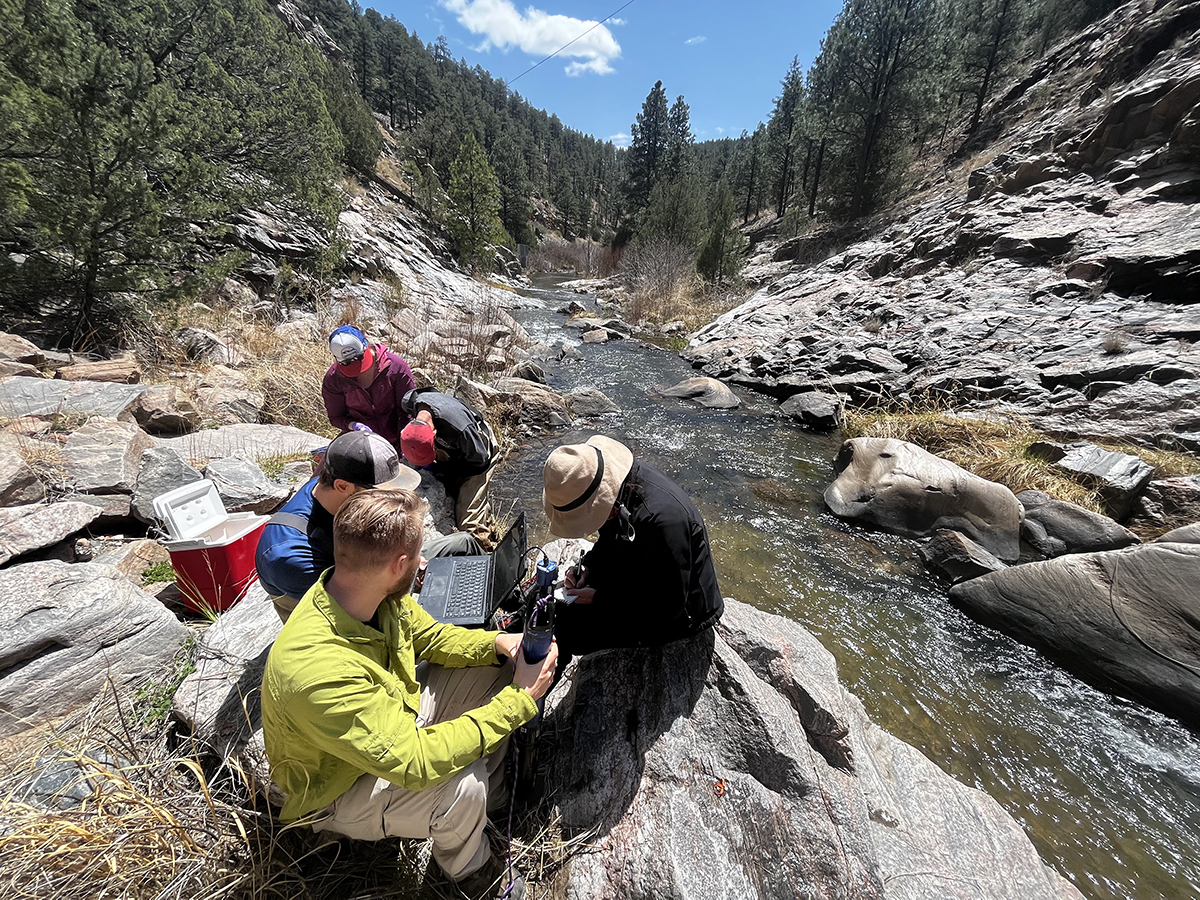Recent News
UNM engineers win 2nd place at RMWEA design competition
June 20, 2025
Study shows protected bike lanes increase bicycle commuting
June 6, 2025
EPA awards UNM $7M to support small water systems
May 29, 2025
UNM Regents' Scholar Rebecca Nez named 2025 Udall Scholar
May 15, 2025
News Archives
Rapid response research allows UNM team to study the effects of the largest wildfire recorded in New Mexico on water resources
August 23, 2024

The results of a longitudinal study on the effects of wildfires on hydrologic and water quality processes have been published in the journal Nature Communications, https://doi.org/10.1038/s41467-024-51306-9. This work was led by Ph.D. student Justin Nichols from the Gerald May Department of Civil, Construction, and Environmental Engineering (CCEE) at UNM, who monitored the impacts of the Hermit’s Peak-Calf Canyon gigafire on hydrologic and water quality processes over multiple years. Working as a rapid response team with other graduate students from the lab of UNM Professor Ricardo González-Pinzón, the team collected unprecedented data describing the generation and longitudinal propagation of aquatic disturbances from the largest wildfire in New Mexico’s history. Other UNM CCEE students working on this project included Eric Joseph, Asmita Kaphle, Lina Rodríguez, Aashish Khandelwal, and Paige Tunby. Other key collaborators in this study include Justin Reale (USACE and USGS), Peter Regier (PNNL), and David Van Horn (UNM's Department of Biology).
This rapid response team has generated other related products, including the development of a general protocol for rapid response research on water quality disturbances https://doi.org/10.3389/frwa.2023.1223338, led by Ph.D. student Paige Tunby, and the development of The Navigator: a Lagrangian sensing system to characterize surface freshwater ecosystems https://doi.org/10.1016/j.watres.2023.120577, led by Ph.D. student Aashish Khandelwal, now at Princeton University.
